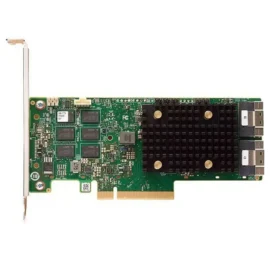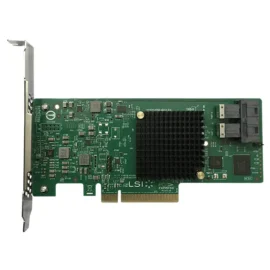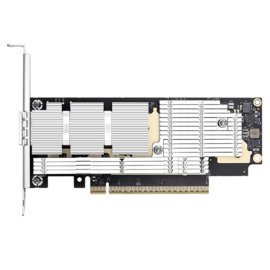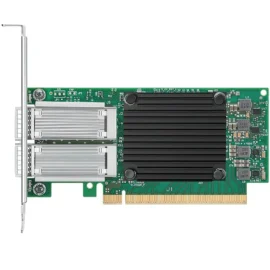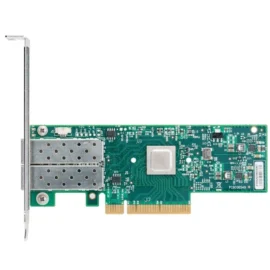In the fast-evolving landscape of data centers and cloud computing, server Network Interface Cards (NICs) have emerged as pivotal components driving efficiency, scalability, and security. While often overshadowed by advancements in processors and storage, modern server NICs are undergoing a revolution—transforming from simple connectivity tools into intelligent, programmable accelerators. This article delves into the latest innovations, use cases, and the transformative role NICs play in shaping tomorrow’s digital ecosystems.
Table of Contents
ToggleThe Evolution of Server NICs: From Connectivity to Intelligence
Early server NICs were straightforward devices designed to link servers to networks. Today, they are sophisticated systems with embedded processors, customizable firmware, and specialized accelerators. This evolution reflects three key phases:
- Basic Connectivity: Early 1G/10G Ethernet cards focused on reliable packet transmission.
- Performance Optimization: The rise of 25G/100G NICs introduced features like RDMA and TCP offloading to reduce CPU overhead.
- Intelligence & Programmability: Modern SmartNICs and Data Processing Units (DPUs) now handle tasks like encryption, storage virtualization, and AI inference, blurring the line between NICs and co-processors.
Core Innovations Redefining Server NICs
1. SmartNICs and DPUs: Beyond Packet Processing
SmartNICs integrate dedicated CPUs (e.g., Arm cores) or FPGAs to offload complex workloads:
- Security: Hardware-accelerated TLS/SSL encryption and intrusion detection.
- Storage: NVMe-oF (Non-Volatile Memory Express over Fabrics) support for low-latency storage networks.
- AI/ML: Filtering and preprocessing data streams before they reach GPUs.
Companies like NVIDIA (BlueField), Intel (IPU), and AMD (Pensando) are leading this shift, embedding NICs with data center-grade programmability.
2. Ultra-Low Latency Technologies
Applications like autonomous systems and financial trading demand microsecond-level responsiveness:
- RDMA over Converged Ethernet (RoCE): Enables direct memory access between servers, bypassing OS stacks.
- Precision Time Protocol (PTP): Synchronizes clocks across networks to ensure timing accuracy.
3. Energy Efficiency and Sustainability
Next-gen NICs prioritize power savings through:
- Dynamic Power Scaling: Adjusting energy use based on traffic load.
- Cooling-Optimized Designs: Low-profile, heat-dissipating form factors for dense server deployments.
Deployment Scenarios: Where Server NICs Shine
1. Hyperscale Data Centers
Cloud giants like AWS and Google deploy SmartNICs to:
- Offload virtualization tasks (e.g., AWS Nitro System).
- Isolate customer workloads for enhanced security.
- Reduce reliance on host CPUs, lowering operational costs.
2. Edge Computing
In 5G and IoT edge nodes, NICs with built-in accelerators process data locally, minimizing latency and bandwidth usage. For example:
- Real-time video analytics at manufacturing sites.
- Autonomous vehicle communication hubs.
3. High-Performance Computing (HPC)
RDMA-enabled NICs are critical in supercomputing clusters, enabling seamless data sharing between thousands of nodes for tasks like weather modeling or genomic sequencing.
4. Zero-Trust Security Architectures
NICs with inline encryption and deep packet inspection enforce security policies at the hardware level, preventing unauthorized access without compromising performance.
Choosing a Modern Server NIC: Key Considerations
- Workload-Specific Acceleration: Match NIC capabilities to your needs (e.g., AI requires Tensor Cores; storage needs NVMe-oF).
- Ecosystem Integration: Ensure compatibility with orchestration tools like Kubernetes or VMware Tanzu.
- Vendor Lock-In Risks: Evaluate open-source SmartNIC frameworks (e.g., DPDK, SONiC) versus proprietary solutions.
- Total Cost of Ownership (TCO): Factor in energy use, cooling, and scalability over time.
The Road Ahead: Emerging Trends
- Chiplet-Based NIC Designs: Modular architectures combining Ethernet, accelerators, and memory for customizable performance.
- AI-Driven NIC Management: Machine learning algorithms optimizing traffic routing and error correction in real time.
- Post-Quantum Cryptography: Preparing NICs to resist quantum computing threats with quantum-safe encryption standards.
- 6G and Photonic Integration: Future NICs may leverage silicon photonics for terabit-speed optical networking.
Conclusion: The Silent Revolution in Networking
Server NICs are no longer peripheral components—they are central to the performance, security, and agility of modern IT infrastructure. As enterprises grapple with exploding data volumes, stringent latency requirements, and sophisticated cyber threats, investing in advanced NIC technology becomes a competitive necessity.
From hyperscale clouds to the edge, the next generation of server NICs will not only connect devices but also redefine what networks can achieve. By embracing innovations like DPUs, RDMA, and adaptive security, organizations can future-proof their infrastructure and unlock new frontiers in efficiency and innovation.
In this era of digital transformation, the humble NIC has quietly become a cornerstone of progress—proving that even the smallest components can drive the biggest breakthroughs.

